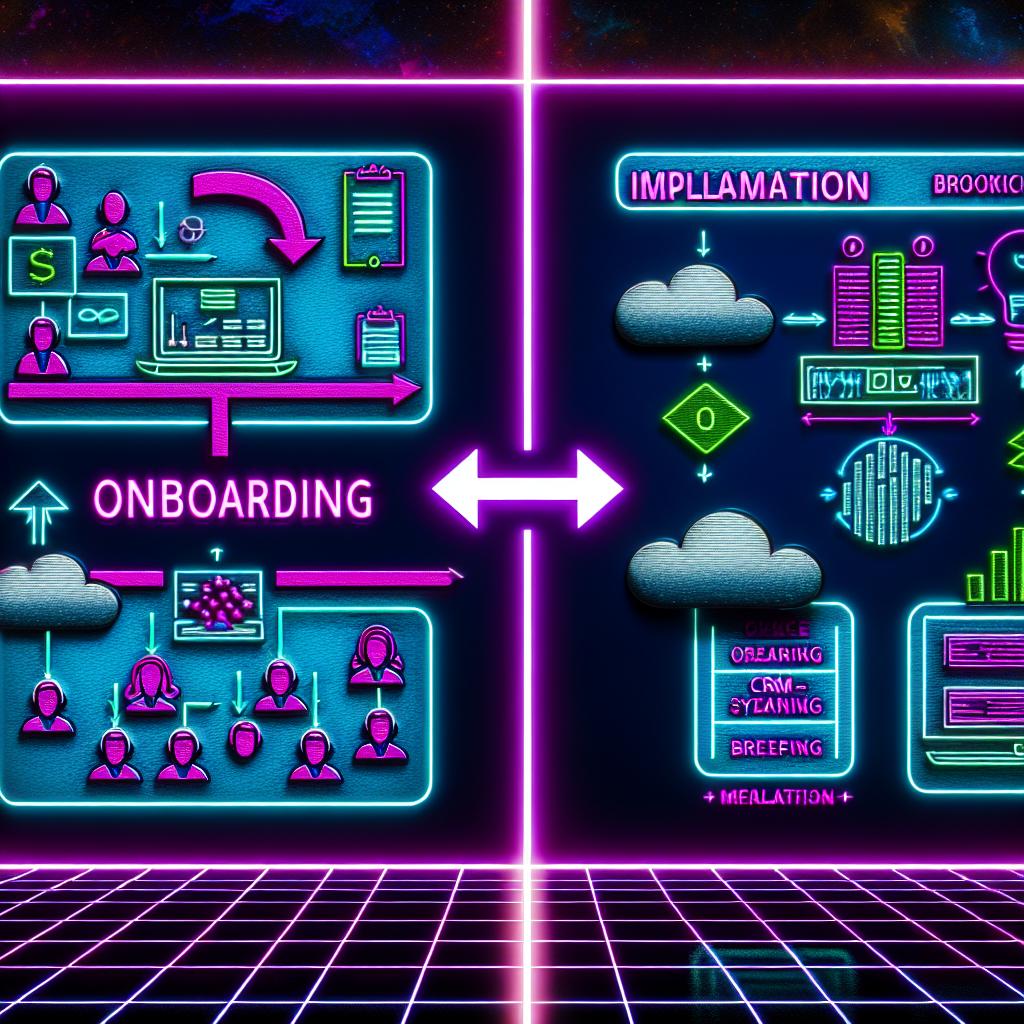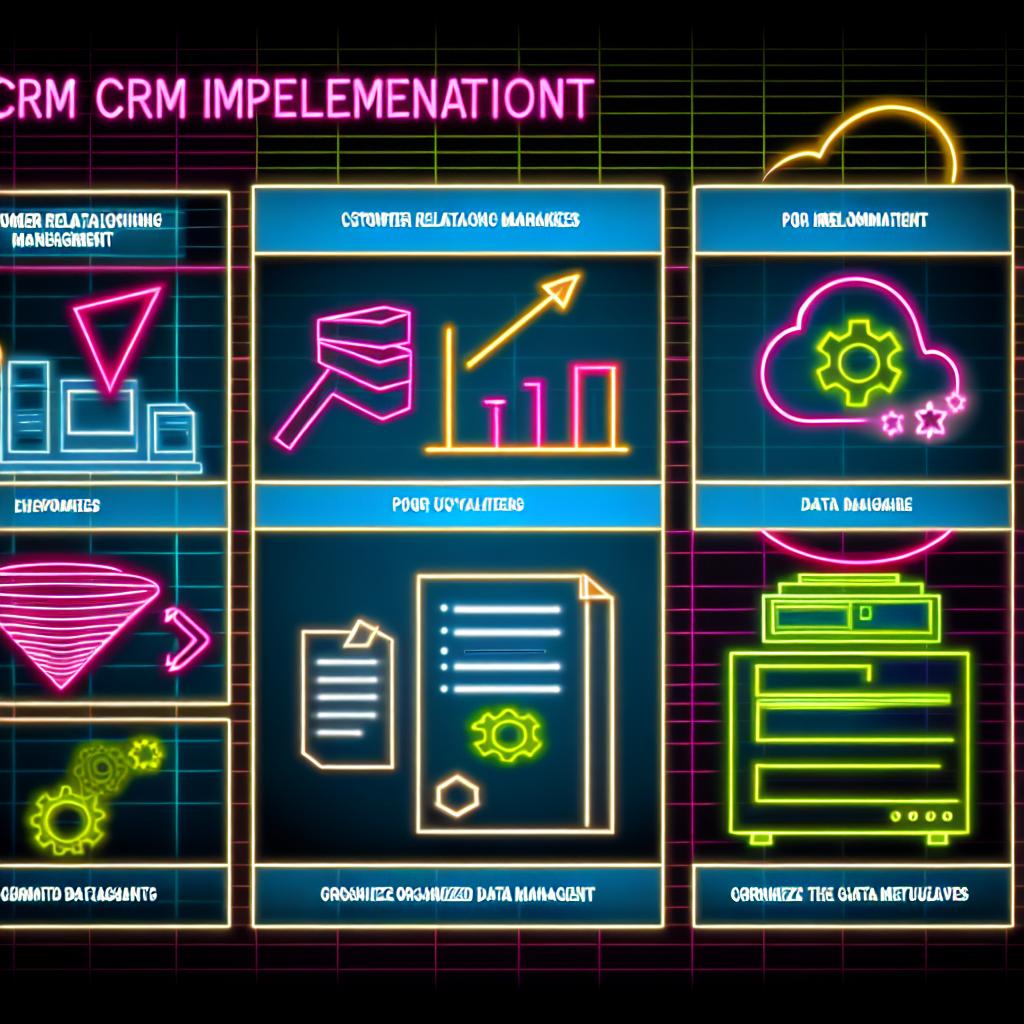Embarking on the journey of integrating a Customer Relationship Management (CRM) system into your business operations is a pivotal decision, one that can redefine your customer interactions and streamline your processes. However,...
Content marketing
Content is King
Even back in 1996, Bill Gates realised that content was going to be incredibly important. The quote Content is King was already coined before Google was founded (1998). Bill Gates’ opinion back then was that content on websites would be like content in the broadcasting world.
Many of the ways that marketers used to do business, both offline and online, are going to be ineffective.
- Your website has stopped delivering as many leads that you hoped it would
- Your offline marketing efforts have ended up costing you more than its giving back
- Your business network has stopped delivering enough opportunities.
All of these issues are problems that are caused by not reaching your leads or prospects. You, and your current clients, know that you know what you are talking about. You are in business because you have enough experience. How do you make others realise this?
Buying behaviour has changed online
In the last ten years, even in the B2B world, the buyer behaviour has changed dramatically. Before, a user would Google your business, have a quick look around your website and then call your office. The prospect would talk to you and your sales team to understand your offering. Then decide if they like it or not.
Nowadays, this has changed dramatically. A user will search for information about a problem they have, read your articles on this issue and hopefully subscribe to your email list. The client will also check your social media feeds and is finding out who is best positioned to help them out.
To achieve this success, it is important to provide your prospects with genuinely helpful information and providing real value. This content doesn’t need to be high quality and artfully produced. Having content that helps a user out and gives them as much of a solution to their problem as you can give them, is the real important takeaway.
One of the pitfalls of many marketers is that they don’t necessarily think about their clients when writing the content. Many content marketers come up with a great idea, write about it, but don’t think if their ideal customer needs this content.
By not looking at buyer persona’s and your ideal customer you can possibly miss the mark on your content. Content can be written perfectly, have a great call to action and look visually beautiful. The problem occurs when the content doesn’t match with what your prospects are looking for.
Delivering the right message
Delivering the right message is incredibly important. Your brand voice should match the voice that your prospects want to hear. There is a clear distinction to be made between a Brand Voice and Brand Tone.
Brand voice is the way of speaking. Such as your choice words, phrasing and style. There are various ways a brand can put its brand voice. For example: Confident, Polite, cheeky, flirtatious. Depending on what type of business you are there will be a different brand voice.
- A political party will want to come across as confident
- Business 2 Business (B2B) company would try to be polite.
- Business 2 Consumer (B2C) company can do all of those depending on the audience.
Brand voice is important because, without a brand voice, you are going to be very inconsistent. If you have multiple people responding to complaints, writing blog posts or writing website content and they all write differently it means people are going to be confused.
If your brand voice is inconsistent it makes it harder to get “true fans” or people who really like your brand. The Brand Voice is the overarching personality of your writing.
Brand tone, on the other hand is the way that your brand interacts with individual messages. The tone is more specifically the way that you respond to users depending on their tone in the message.
A few examples to clarify this:
- If you are a brand that has a cheeky brand voice, but you get a serious complaint. You aren’t going to make tongue-in-cheek jokes, but react more professionally
- However, if you get a message that is praise for your business you are going to be more tongue-in-cheek.
A great analogy is given here. They compare brand voice and brand tone to music albums. The brand voice is the overarching writing style of a band, the distinctive sound that you hear throughout their music.
The brand tone is the shifting moods and attitudes of the individual pieces. Most bands release an album that has different songs that touch on different “moods”. Happy songs, sad songs and anything in between.
Even though these bands have one overarching “voice” their individual pieces still have different “tones”.
Having a clear brand voice makes sure that your visitors know what to expect. This doesn’t just count for the online interactions. Even when talking to customers on the phone, or writing emails or having meetings, your brand voice should be consistent with every interaction you have with your prospects and clients.
This all ties back into having a clear message to your customers. If you want to work on your brand voice and tone. This HubSpot guide is very helpful. It has a SlideShare with tips and tricks on how to find your brand voice. If you follow the steps in that guide, you will be well on your way to have a distinctive brand voice in no time.
Content marketing in different channels
Content Marketing in Social Media
For social media marketing, your content marketing should be the focus. There are a few important steps for social media marketing to be successful.
- Find your objective - Know why you are on social media. Some businesses are on social media to provide great customer support, others are there to solely improve brand awareness.
- Understand your Buyer Personas – If your Buyer Personas are all on Snapchat, but you focus your efforts on LinkedIn you are not reaching the right people. Understand your Buyer Persona and where they are. Also understand how your Buyer Personas are using social channels. Perhaps Facebook gets used to gather information, but LinkedIn gets used to make a decision on whether the product is used or not
- Right messaging – this come back to the brand voice and brand tone. If you create a big content plan to raise brand awareness, it is important that this is done successfully and that the right message is getting send out in the world.
- Social Content Optimisation – each message that gets sent out on Social Media, such as a Tweet, should be considered as a contextual piece of content that is helping the overall content plan succeed.
- Social Monitoring – It is not just about sharing content and being in the face of your prospects 24/7. It is also about listening to your ideal customer and understanding what they are talking about. Then write content related to that as well.
- Engage – Start engaging with customers and answer questions. Even if they aren’t specifically asking you, just be helpful and answer their questions and queries. Join Facebook Groups. LinkedIn Groups. Always be genuine and helpful.
- Connect to a marketing automation platform – this way potentially interesting contacts can easily be reached out to. Very rarely, especially in B2B markets, does social media return qualified leads.
The last point doesn’t mean that social media marketing should be ignored, definitely not, it is a great tool for getting more brand awareness. As can be read in our blog on Email marketing, social media is a great tool to get more subscribers for your email marketing list.
Google Ads
Google Ads should also be a part of your content marketing strategy. The way that you write your ads, is also as important as writing your blog posts or social media posts. If you are writing google ads, make sure you follow your brand voice and brand tone.
Google Ads can be a big part of your content marketing strategy as well. When creating landing pages or other pieces of content, you can use Google Ads to drive traffic to these pages.
If you are going to be using Google Ads to promote your content keep the following factors in mind.
- Use CTAs - if people land on your landing page or content piece with no clear CTAs or navigation, they might get frustrated and leave your website. Which will cost you money
- Social Sharing – social sharing is a great way to get more traffic to your blog post or article and will drive engagement.
- Email signup – make sure that there is a clear email signup page so that, when understandably people like your content, they can easily sign up to receive more content
Content marketing for paid ads is also called content advertising. This area of content marketing focuses more on using paid advertisement to serve the content to the right people, rather than waiting on organic search to start showing your blogs and articles to your audience.
It is important that both the articles you write as well as the advertisements you are writing are keyword rich and follow the brand voice rule.
Email Marketing
We have written in detail about Email marketing in our blog. However, with regards to content marketing the same rules still stand. Make sure that your emails are following your brand voice and your brand tone.
Make sure that the content you write is easily digestible and that the content is tailored to the right audience. If you write for a specific audience make sure that the audience feels like they can relate to you.
The following parts of an email are important to keep in mind.
- Subject line – the subject line is the first part of an email that subscribers read. If the subject line is not engaging and snappy your email will most likely stay unopened. If you haven’t thought of writing a good subject line, just look at your own inbox and see which emails you have opened. Those subject lines caught your attention
- Body Copy – Make sure that the copy of the email matches with the subject line. If your subject line promises “13 tips to have a good day” and the entire email is about how to lose weight, your user will obviously be very unhappy.
- Calls to Action (CTA) - Make sure that the CTA stands out. If you want people to read more of the blog you posted make that button interesting. If you need feedback, perhaps add a “I’ll help out!” button.
- Nice sign off – Make sure that the sign off is personal. Don’t always open and close with the same message. Tailor it and make sure that those messages are personalised. Always close with your social media handles.
Blog Posts
Blog posts are one of the cornerstones of a good inbound marketing strategy. It is also one of the corner stones of an effective content marketing plan. Blog posts are the part of your content plan that will make your website visitors want to return for more.
One of the biggest pitfalls of a blog post is not spellchecking and QA’ing the blog post. Many eyes will fix as many mistakes as possible. Having an error-ridden blog post will make users leave quickly.
Here are a few tips and tricks on creating successful blogs.
- Keyword research – make sure that your topic gets searched online. As much as you want to write good content, if it doesn’t get found it won’t have any effect
- Get visual – try to use images and GIFs on your blog to improve engagement. It has been proven time and time again that blogs with engaging images have more success
- Plan for social media – make sure that your content is easily sharable. Don’t just share in your Facebook Group, have a budget for paid Ads. Engage with influencers and identify online communities where you can share as well.
- Engage your Email list – Segment your audience so your blog only goes to those interested. Split test your headlines for your emails. Use links to share to social from the email itself.
- Follow through on social – If you reached out to influencers and experts, use their handles to engage their audience as well.
- Keep promoting – After the blog post is live, you have shared it via a Newsletter and on social. Keep pushing your blog post for a while. Try to get as much engagement as possible on it.
One of the more complicated parts of blog posts is that long-form content is becoming increasingly popular. This means that blog posts with less than 1,000 words will not perform as well as longer content. According to research, the articles and blogs with at least 2,000 words are the ones ranking the highest on Google. Users are expecting detailed reports and deep diving content.
Learn from the best
Below is a list of the most successful Content marketing campaigns.
- Coca-Cola #ShareaCoke – this campaign was great because it allowed people to get a Coke with their name on it. The campaign was trialled here in beautiful Downunder and Cokes were able to be bought with your name on it. This campaign was such a success it went global soon after.
- Buzzstream – Buzzstream wrote many articles around their content and started a nine month long content push to position itself as a great source of information.Their content was both gated and non-gated. It led to many new subscribers and ended up being a huge success.
- Lush – Lush is an ethical and organic cosmetics brand. They use a lot of different platforms to market. They create both videos and regular content. But their main driver is that they encourage users to share the ways that they use their products.
- HubSpot – HubSpot writes great long-form content and provides genuine value to their customers. They also have a great Learning Hub and a lot of downloadable content.
Conclusion
Content marketing is an expansive field and is one of the pillars of a great Inbound marketing strategy. If you want to start a successful content marketing strategy keep the following in mind:
- Brand voice & brand tone – make sure you are using a consistent style across the board
- Educate and add value – your content needs to educate users and provide genuine value. People want to be educated, not sold to
- Social Media – Have a great plan and strategy in place. Don’t just post and forget, actively engage and be part of the community
- Google Ads – this is a great tool to promote new blogs and information. Make sure your headline and content for Google Ads are consistent with your brand voice
- Email marketing – Make sure you perform A/B testing and use your brand voice. Educate your readers.
- Blog posts – The cornerstone of inbound marketing. Do keyword research and write an engaging blog post. Use images and GIFs/videos where appropriate
From the blog


